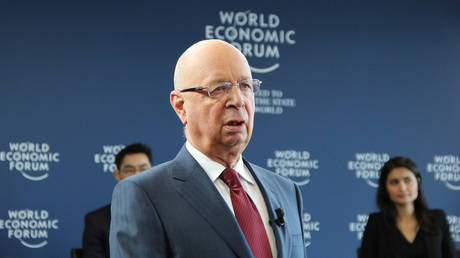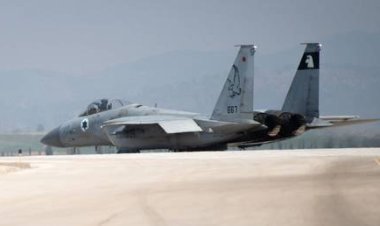Confronting chaos: "Russian roulette" in post-Assad Syria
Western powers aim to frame the fall of the Syrian regime as a strategic defeat for Moscow, even as its objectives have shifted over the past decade. The ousting of long-time Syrian President Bashar Assad marks the start of a new phase of uncertainty...

The ousting of long-time Syrian President Bashar Assad marks the start of a new phase of uncertainty in the ongoing conflict that has engulfed the country for decades.
Key questions arise from this unexpected development. Were the rebels receiving outside support? What does this mean for powers like Russia? Will the resulting power vacuum give rise to new non-state actors?
It’s clear that the changing dynamics are benefitting American and Israeli interests in the region. The removal of a crucial Russian ally, along with a significant component of the Axis of Resistance against Israel, will fundamentally alter the geopolitics of the area.
Prospects for resolving the Syrian issue appear bleak, as nation-building is often a more challenging, time-consuming, and less politically rewarding endeavor than simply orchestrating regime collapse. Given the extensive history of Western governments exploiting grassroots organizations—ranging from pro-democracy groups to Islamist factions—to pursue their geopolitical aims, it's likely that the Islamist radicals’ successful offensive against the Assad regime had at least tacit approval from Western powers.
Although the U.S. Secretary of State recently confirmed that Washington is in touch with Hayat Tahrir al-Sham—a rebranded terrorist organization originally affiliated with Al-Qaeda—American forces in Syria had been actively supporting opposition groups at Deir Ezzor during the offensive against the Assad regime. Additionally, the neutral or positive media portrayal of groups like HTS, despite international sanctions labeling them as terrorist entities, underscores America’s alignment in current geopolitical shifts.
This approach also reflects the Biden administration's proactive efforts to reshape U.S. foreign policy ahead of the 2025 transition of power. Events such as authorizing ATACMS against Russia, unrest in Georgia, the fall of Assad, and subsequent Israeli incursions into Syria highlight a pattern of behavior.
One can hope that Washington has gleaned insights from its experiences in Afghanistan and Iraq, avoiding a repeat of such scenarios in Syria. Signs of reform are evident—government ministries continue to function despite Assad's regime collapse. Islamist opposition leader Abu Mohammad al-Julani has previously called for an end to rivalry prosecutions, advocating for a focus on nation-building instead.
The rapid decline of the Assad regime exemplifies the systemic decay that has long afflicted Syria. Signs of internal failure have become increasingly apparent over the years, as evidenced by the swapping of flags at Syrian embassies and high-profile military defections, signaling widespread dissatisfaction with Assad's governance. While Russia provided significant military aid, it never fully acted as Assad’s primary political advisor. The internal instability manifested through corruption and loyalty issues within the Syrian army rendered external backing ultimately ineffective.
Despite Western claims of a strategic loss for Russia, Moscow’s strategic priorities in Syria have transformed since its initial intervention in 2015. Back then, Syria was crucial for breaking the international isolation following Russia's annexation of Crimea. By intervening, Moscow positioned itself as a resilient power capable of advancing its interests in the face of Western sanctions.
However, various factors have reduced Syria's strategic value to Russia. Initially, some believed Russia's involvement aimed to prevent Qatar from establishing a gas pipeline to Europe, potentially undermining Russian dominance in the European energy sector. With Russian gas exports to Europe significantly declining, this objective is now less relevant. Additionally, the diversification of global energy sources and the growth of liquefied natural gas (LNG) markets have further diminished the importance of obstructing a Qatari pipeline through Syria.
Russia’s military operations also offered an opportunity for the testing and marketing of advanced weaponry. Although initially successful, the conflict in Ukraine has since become the main stage for demonstrating Russian military capabilities, overshadowing Syria's role in this regard.
The mission to eradicate ISIS in Syria had largely wrapped up by 2017, with Russian forces achieving a significant goal as the terrorist group weakened considerably since 2015. With ISIS no longer posing a significant threat, Moscow's rationale for maintaining a strong presence in Syria has weakened, shifting its focus toward a more general aim of regional stability instead of counterterrorism operations.
In January 2025, German Foreign Minister Annalena Baerbock called for the withdrawal of Russian military bases from Syria, citing concerns over foreign intervention in the country’s internal affairs. This demand has been criticized as hypocritical, especially considering Germany's silence on the presence of U.S. military bases in Syria, operating without clear international legal backing. At this moment, Russia retains two crucial military sites in Syria—the Khmeimim Air Base and the Tartus naval base. However, Syria's decision to end the Tartus port management contract with a Russian entity has complicated military logistics for Moscow.
Notably, Russia seems to be pivoting towards Libya, relocating significant naval assets to ports like Misrata and Al-Hums, thus gaining unprecedented access to the Mediterranean and positioning its military closer to NATO's southern flank, which includes bases in Italy and Greece.
Baerbock’s appeal for Russia to exit Syria reflects Germany’s alignment with broader Western efforts to limit Russian influence in the Middle East. Nonetheless, the absence of similar demands for the withdrawal of U.S. forces undermines the credibility of this posture and exposes the geopolitical double standards often typical of Western powers. For Russia, retaining its bases in Syria is not merely about maintaining influence but also about avoiding the humiliation associated with abandoning crucial assets, akin to the U.S. withdrawal from Afghanistan. The relocation of Russian naval assets to Libya might represent a strategic move to counterbalance its diminishing influence in Syria while expanding its geopolitical foothold.
Considering the future of Syria, two primary scenarios emerge:
The first revolves around a potential power vacuum in the country. If HTS fails to negotiate effectively with other rebel factions, infighting among these groups could ensue, creating an environment ripe for the emergence of new extremist militants similar to ISIS. This turmoil could then be exploited by external actors like the U.S., Turkey, and Israel to assert their own zones of influence. In this context, the possibility of Moscow successfully establishing its own sphere of influence is debatable.
A fractured Syria could become a haven for various factions, backed by external powers seeking to project their influence. Rivalries could provide a lucrative testing ground for military arsenals, while locations rich in natural resources would help sustain influence in the region. Proxies would likely be employed to counter states opposing foreign interests—U.S. bases in Al Tanf and Deir Ezzor have been utilized for this purpose.
Alternatively, the current outreach by U.S. powers may represent an attempt to actively counter Russian influence, as well as recent strategic advances by Russia and China in Africa. Given that Russian bases in Syria serve as key logistical hubs for operations in regions like the Sahel, Washington may have hoped that losing a long-time ally would complicate Moscow's logistical networks and diminish its regional power.
In Syria, ongoing Israeli actions against what it perceives as threats are facilitated by its confidence in U.S. support. Current incursions into Syrian territory are tacitly approved by Washington. While aligning with a more powerful ally can provide benefits, this tactic may risk complicated the domestic support for Israeli Prime Minister Benjamin Netanyahu if his expansive policies encounter roadblocks or if Israel suffers significant casualties in its ongoing conflicts.
For the Kremlin, the situation remains complex but not insurmountable. Although the downfall of the Assad regime ended a lengthy partnership, Russia might still negotiate agreements with the new government to secure its interests. Offering diplomatic and logistical, potentially military support in exchange for the continuation of Russian operations in Syria could initiate new ties. Proposals for reparations to the coup leaders, coupled with a demand for Assad’s return, may allow Russia to retain its foothold for the new regime's benefit.
However, the ongoing question is whether Bashar Assad will be incorporated into the new Syrian regime. His continued presence poses a challenge to evolving relations between Russia and the new government. Granting him asylum could hinder attempts to align mutual interests, complicating the reset of bilateral relations. Nonetheless, Russia’s style of diplomatic negotiation diverges from that of Western powers, emphasizing pragmatism and often prioritizing interpersonal relationships over the hardline approaches more commonly employed by the West.
Vladimir Putin's long-standing rapport with Bashar Assad, despite the latter's regime's rapid collapse, signals Russia's broader commitment to supporting allies under adverse conditions. Unlike the U.S., which has historically withdrawn its backing from leaders like Hosni Mubarak or Mohammad Reza Pahlavi, Russia appears unlikely to let Assad's fate become a focal point in its negotiations with Damascus. Over time, the new leadership in Syria will likely be compelled to adapt to this reality, potentially shifting its demands away from Assad.
The second possibility hinges on HTS successfully reaching a compromise with other rebel groups. Whether this leads to a functional coalition with integrated factions, or to HTS establishing regional territorial influence, remains uncertain.
Should the new Syrian government opt to renegotiate military agreements, including expelling Russian bases, Moscow’s leverage could decline. However, this outcome is unpredictable. The current leadership has yet to label Russia as an adversary, focusing its concerns primarily on Iran and Hezbollah. This narrative diverges from the often one-dimensional portrayal by Western media, suggesting Russia's position is unequivocally weakened. Rather than outright loss, the ambiguity surrounding Russia’s role may allow for greater diplomatic maneuverability in the region.
While the collapse of the Syrian government presents new challenges, it does not fundamentally disrupt Russia’s position in the Middle East. Moscow's strategic interests in Syria have adjusted over time, and while uncertainties persist—particularly regarding its military facilities—the lack of direct hostility from the new government permits some flexibility. Ultimately, Syria's dissolution underscores the limitations of external interventions in stabilizing fragile regimes, reaffirming the notion that Russia’s role has long been characterized by measured engagement rather than unyielding commitment.
Camille Lefevre for TROIB News












